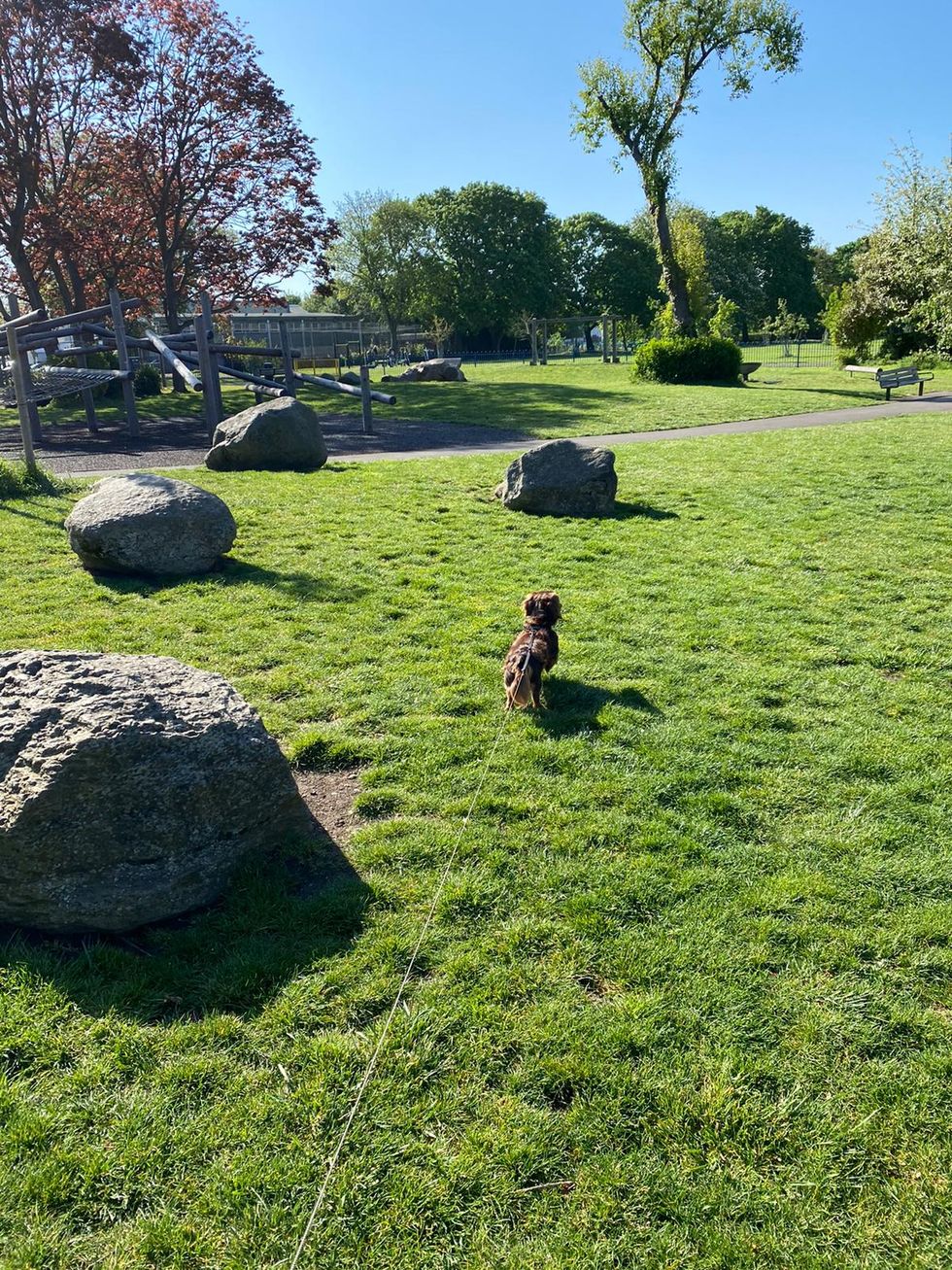Jess bantleman//Instagram
The benefits of walking cannot be over-extolled: one study found that a 12-week walking program significantly reduced anxiety and improved cardiorespiratory fitness and quality of life in middle-aged and older adults with depression, while another showed that high-intensity walking in midlife was associated with significantly improved episodic memory (recalling specific events). If you want to take it to the next level, you could even set yourself a daily length of time or step count to reach, just like WH UK’s former social media manager, who discusses what happened when she undertook a walking challenge, taking a walk for 30 minutes every day for a month.
My one walk a day was the highlight of every 24 hours I spent cooped up indoors during lockdown, but that soon let up once our lives got back to some level of normality. I started back with gym workouts once my local gym reopened, but fast-forward to now and I’ve been majorly lacking motivation. So, I wondered if bringing the simple, low-impact, easy-to-fit-in daily walks would help me achieve the daily movement I’ve been craving.
With that in mind, I decided to attempt my own walking challenge, walking 30 minutes every day for a month. Turns out there are more benefits than I ever realized.
What are the benefits of walking every day?
Before I get into the nitty gritty of my walking challenge, let’s recap on the general benefits of walking.
- It’s free
- It’s low-impact
- It can be done anywhere
- You can do it in a group or solo
- It increases brainpower, according to a New Mexico Highlands University study
- It improves heart health, (think lower risk of high blood pressure, high cholesterol and diabetes) as much as running, according to the American Heart Association
- It’s good for your mind. Walking in nature has been linked to improved mental health by the University of Michigan Health System
- It decreases the risk of illness (stroke, coronary heart disease, depression and other life-threatening conditions), as per this University of East Anglia
1.Pets are good motivators
I should mention here that I have a dog, who also needs walks. And if there’s one thing that will get me out of the house when I don’t feel like it, it’s Frank and his need to collect every stick he sees in the park. Having a little furry friend along for my walking challenge helped the time pass quickly, and gave him the exercise he needed to, so if you have a WFH buddy, get them in on the action too.
2. Walking forces you to slow down
One thing I find the hardest about working out is the pressure I put on myself to get the most out of my allotted workout time. If I’m in the gym for an hour, I need to be doing something every minute of that hour, or I beat myself up for not making the most of it. As someone with PCOS, this can do more harm than good, since going hell-for-leather can cause spikes in cortisol and in turn, my insulin resistance. Walking, on the other hand, is a great way to just take the pressure off completely and enjoy movement again.
3. Walking is easily adaptable
After two weeks, and a turn of terrible weather once again, I decided to step it up a notch and bring my daily walk into the gym to incorporate some incline and speed variety.
Enter our familiar friend, the 12-3-30 workout. For the uninitiated, the format for the 12-3-30 workout (which went viral on TikTok, FYI) is as follows:
- Set your treadmill incline to 12%
- Set your speed to 3mph
- Walk for 30 minutes
I started to make this my daily walk for the last two weeks of the walking challenge. It’s a great alternative to getting the low intensity benefits of a walk, but in a different environment to my usual leisurely strolls, and it also meant that I was forced to really engage my core with the incline. Safe to say I was sweating by the end of each session.
4. Committing to a walking challenge kept me consistent
I’ve never really been one to count steps throughout my day, but I will admit that having this small challenge each day kept me consistent. Rather than counting how many steps I was taking, I was intentional with the allotted time. Which brings me to my next point…
30 minutes is (to me) a lot more appealing than an hour-long sweat sesh and isn’t too daunting to fit into my day. If the thing that’s going to keep you consistent is setting a realistic time slot and taking it slow, putting one foot in front of the other, be it outside or on the treadmill, then that’s what you should do, and this has been one of the biggest takeaways from my walking challenge.
A ‘good’ workout doesn’t have to be defined by killing yourself in the gym. So slow down if that’s what your body is telling you to do (or reduce the time you prescribe yourself if it’s going to make it less overwhelming), and let your body learn to love moving again, one step at a time.
My walking challenge results
By the end of the month, having split the month into two different types of walking, I really noticed a difference not just in my body, but in my mind.
The 30-minute outdoor walks at a slower pace helped to take the pressure off exercise, get me out of the house and bring all-round clarity. It cleared my head, allowed me to breathe fresh air, and got my body moving and my blood pumping.
Incorporating the incline and increased speed on the treadmill as part of my 12-3-30 walks for the last two weeks helped me turn it up a notch. Walking for 30 minutes on a treadmill on an incline of 12 is a lot harder than you think, and it really wakes your body up, gets you sweating and helped engage and strengthen my core.
Naturally, these walks were harder than my slower outdoor strolls, but they were still achievable and didn’t give me the wired feeling that I’d get from the intense gym workouts I usually do. Will I be keeping up 30 minutes of walking a day? Probably not every day, but I’ll definitely be replacing at least two of my gym workouts with walks, whether they’re outdoors or at the gym.
Note: This article is reproduced from “Runner’s World”.



